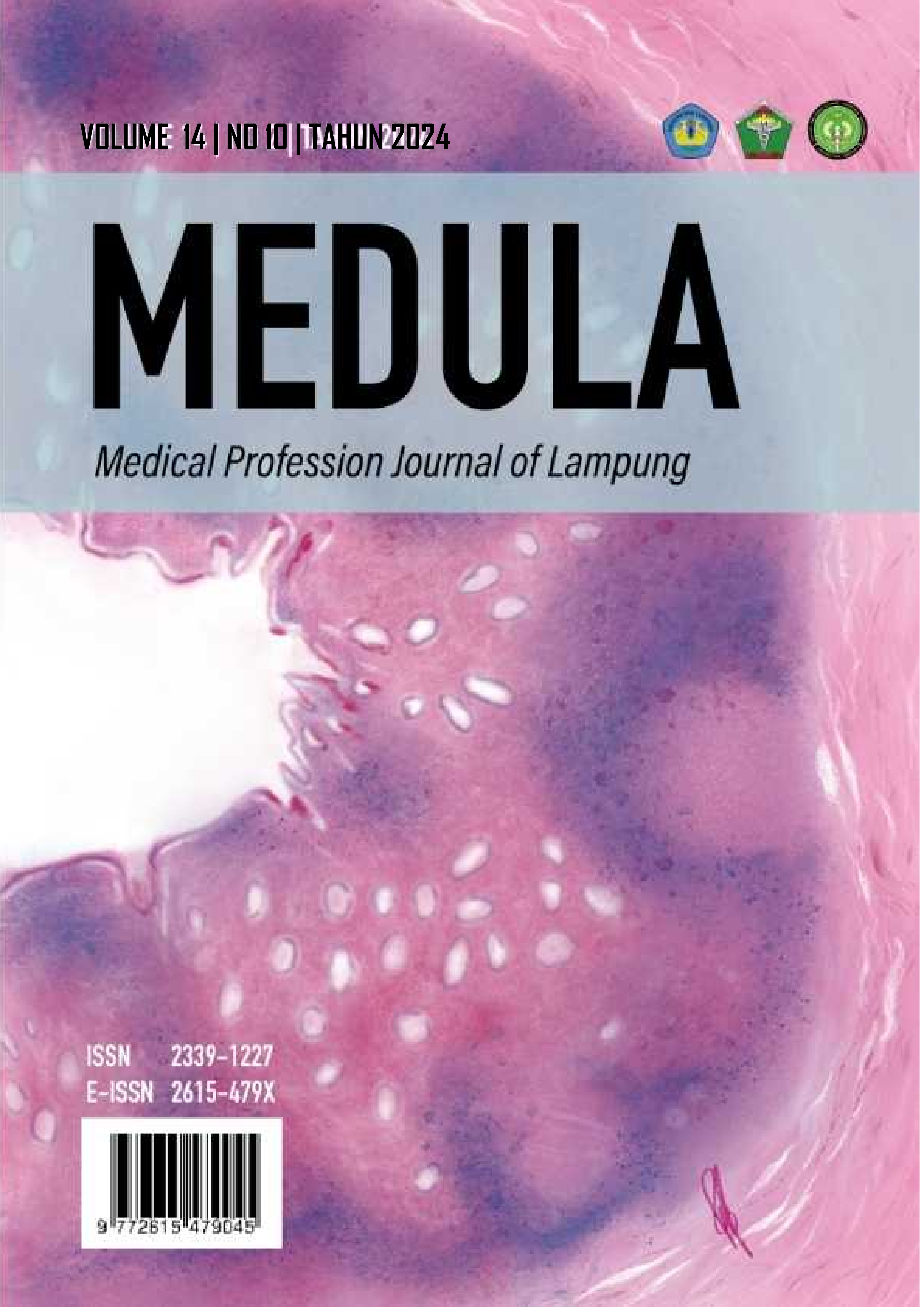Blood Pressure in Athletes: Literature Review
DOI:
https://doi.org/10.53089/medula.v14i10.1398Keywords:
Athlete, Cardiovascular, Blood pressureAbstract
Blood pressure in athletes is an important topic in exercise physiology studies, given its influence on performance and long-term health. In general, athletes exhibit lower blood pressure at rest compared to sedentary individuals, as a result of the body's adaptation to regular physical exercise. The purpose of this method is to analyze and collate knowledge relevant to the research topic. In this study, 12 articles from national and international journals published between 2015 and 2023 were used. The articles were obtained from databases such as PubMed and Google Scholar. The collected sources were then analyzed using the systematic literature review method. The result of this study is that blood pressure in athletes can be different compared to individuals who are not involved in intense physical activity, due to the body's adaptation to regular exercise. Blood pressure in athletes is influenced by a variety of factors, including sport type, training pattern, age, gender, as well as genetic and environmental factors. Understanding these blood pressure patterns is important for optimizing performance and maintaining cardiovascular health in athletes.
References
Singh JN, Nguyen T, Kerndt CC. Physiology, blood pressure age related changes. StatPearls. 2024
Nalbani G. The control of vital parameters and their importance in soccer players of the women's national a in albania. European Journal of Medicine and Natural Sciences. 2023;6(1):40-45
Anggriawan N. Peran fisiologi olahraga dalam menunjang prestasi. Jurnal Olahraga Prestasi. 2015;11(2):8-18
Sudarko RA, Sukamti ER, Fadhilah RN. Evaluation of the level of physical condition of the center of athletes special region of yogyakarta. in conference on interdisciplinary approach in sports in conjunction with the 4th yogyakarta international seminar on health, physical education, and sport science. Atlantis Press. 2022;123-125
Pesova P, Jiravska Godula B, Jiravsky O, Jelinek L, Sovova M, Moravcova K, Ozana J, Gajdusek L, Miklik R, Sknouril L, et al. Exercise-Induced Blood Pressure Dynamics: Insights from the General Population and the Athletic Cohort. Journal of Cardiovascular Development and Disease. 2023;10(12):480. https://doi.org/10.3390/jcdd10120480
Currie KD, Floras JS, La Gerche A, Goodman JM. Exercise Blood Pressure Guidelines: Time to Re-evaluate What is Normal and Exaggerated? Sports Med. 2018;48(8):1763-1771. doi: 10.1007/s40279-018-0900-x. PMID: 29574665.
Muntner P, Shimbo D, Carey RM, Charleston JB, Gaillard T, Misra S, et al. Measurement of blood pressure in humans: a scientific statement from the american heart association. Hypertension. 2019;73(5):e35-e66.
Crescenzi C, Zorzi A, Vessella T. "Predictors of left ventricular scar using cardiac magnetic resonance in athletes with apparently idiopathic ventricular arrhythmias". J Am Heart Assoc 2021;10:e018206
Sapra A, Malik A, Bhandari P. Vital sign assessment. In: StatPearls. 2023
Bauer P, Kraushaar L, Hoelscher S, Weber R, Akdogan E, Keranov S, et al. Blood pressure response and vascular function of professional athletes and controls. Sports medicine international open. 2021;5(2):E45–E52.
Kim D, Ha JW. Hypertensive response to exercise: mechanisms and clinical implication. Clin Hypertens. 2016;22(17). https://doi.org/10.1186/s40885-016-0052
Brown DM, Muir C, Gammage KL. Muscle up: male athletes’ and non athletes’ psychobiological responses to, and recovery from, body image social-evaluative threats. American Journal of Men’s Health. 2023;17(1).
Downloads
Published
How to Cite
Issue
Section
License
Copyright (c) 2025 Medical Profession Journal of Lampung

This work is licensed under a Creative Commons Attribution-ShareAlike 4.0 International License.














